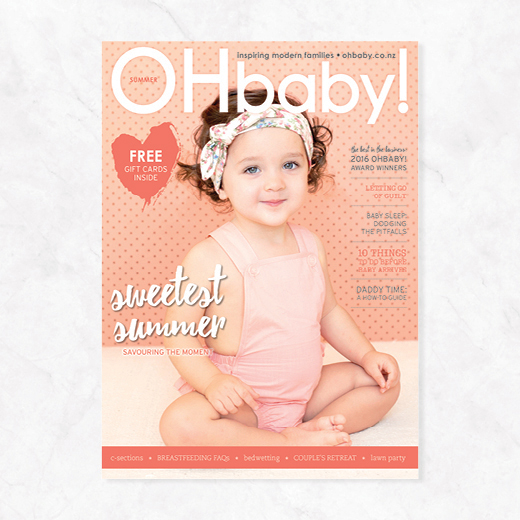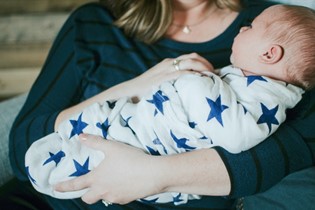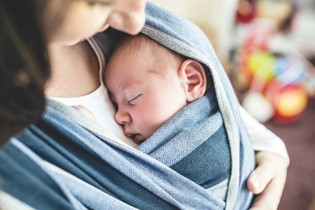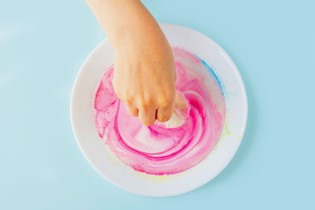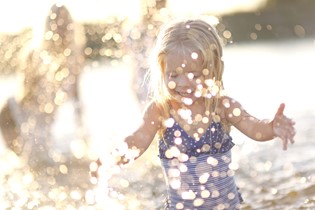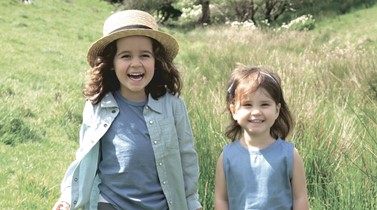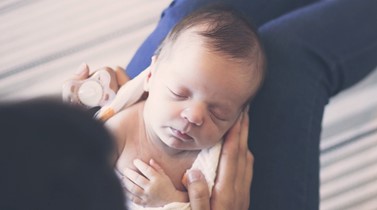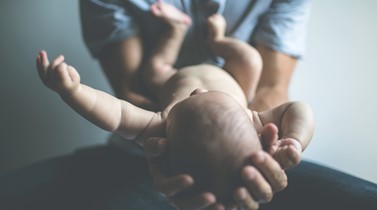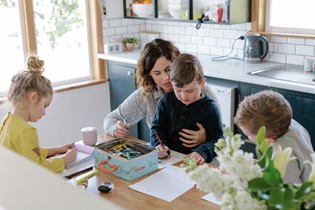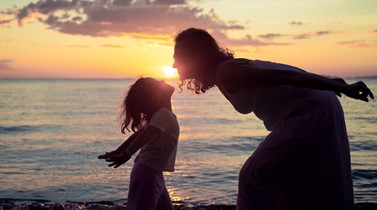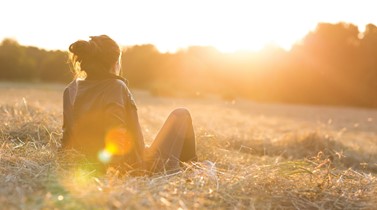Finding refuge in New Zealand
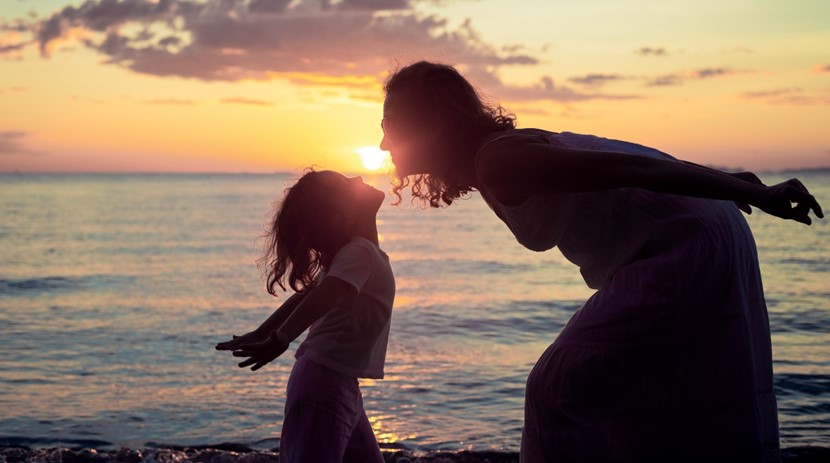
Catherine Tafto meets a mother who fled her home country in the hope of finding a safe home and future for her children in New Zealand.
When we become parents, the fierce love we feel for our children leaves no doubt that we would do anything to keep them safe. Yet for most of us this extends to remembering to buckle their carseats, making them hold our hands as we cross the road, and advising them not to get into the car with strangers.
For millions of people around the world, the choices they face to keep their children safe are terrifying, heart-wrenching and beyond what most of us could ever imagine. Seeing photos of parents with small children on unseaworthy, overcrowded boats crossing the Mediterranean or walking for miles makes you wonder how bad things had to get before this seemed the best option.
Forcibly displaced
In 2014, an average of 42,500 people per day were forcibly displaced. Those who remain in their home country are referred to as internally displaced people, those who leave become asylum seekers, and some asylum seekers will become refugees. There are more forcibly displaced people worldwide than ever before, the total number estimated to be 59.5 million in 2014.
When people flee across an international border, they become asylum seekers and can apply for refugee status with the United Nations High Commissioner for Refugees (UNHCR).
Being a refugee is a basic human right, as stated in the Universal Declaration of Human Rights. The 1951 Refugee Convention relating to the Status of Refugees is the key legal document in defining who is a refugee, their rights and the legal obligations of other countries. To get refugee status, people must be able to prove it is not safe for them to return home. Once they receive refugee, status they can be resettled in a third
country but many people spend a long time waiting – the average length of time spent in a refugee camp is 17 years. Children make up about 41 percent of the world’s refugees, and about half of all refugees are women.
While the media coverage currently focusses on those refugees who have made it to Europe, the majority of refugees are in countries neighbouring those which they have fled from. Turkey has the most with 1.84 million, followed by Pakistan with 1.5 million, Lebanon 1.2 million, Iran 982,000 and Ethiopia with 702,500. In Lebanon this number represents almost a quarter of the population.
When the numbers are so overwhelming, it can be hard to see beyond the masses and remember every one of these people is someone who has found themselves in an unbearable situation – someone who had to make a dramatic choice to save or improve their life and the lives of their family members.
I would like to introduce you to Maria*.
The other side of the world
Since 1964, the armed conflict in Colombia between the government and guerrilla groups has terrorised civilians caught in the crossfire. Colombia is home to one of the oldest and most dominant guerrilla groups in the Western Hemisphere. This group has financed their political and military battle against the Colombian government through kidnapping, extortion and as one of the world’s largest cocaine traffickers.
Colombia has the world’s largest population of internally displaced people, with 6.9 million people forced from their homes by the conflict. It has also left an estimated 260,000 people dead and 45,000 people missing. One of the missing is Maria’s partner.
When their daughter Gabriela was born, 17 years ago, they were living in a dangerous part of Colombia and her partner became associated with the aforementioned guerrilla group by necessity. Before long he went missing. From then on Maria began to receive death threats. When Gabriela was four, Maria’s mother escaped with her to Ecuador and Maria followed.
There are around 260,000 Colombians in Ecuador, 57,000 of whom are recognised as refugees, and they face a unique set of challenges. In most refugee situations, the UNHCR has refugee camps set up, with the facilities and resources to address their needs. However, those fleeing to Ecuador, Venezuela and Panama from Colombia must make it alone. They must establish themselves and they experience discrimination, making finding a steady job difficult.
Although Maria found work as a cleaner and in restaurants, it was hard to work and care for her growing family at the same time. And with Colombia right next door, the long arms of the guerilla group stretch over the border, and Maria found her troubles had followed her. “The threats continued”, she says. “It was hard to find stability as I had to keep moving every time they found me and started to threaten me again.’”
This continued for ten years but Maria is an independent woman and didn’t ask for help – until they targeted her daughters. “They would say ‘Oh, Gabriela is growing up, we know which school she goes to, we are watching her’. That is when I knew we had to leave” remembers Maria.
Maria went to the UNCHR offices to register as a refugee. Once her application was approved, she waited for two years to get a resettlement place. Maria was given one month’s notice that she would be moving to New Zealand with her three daughters, aged four, nine and seventeen.
Call New Zealand home
New Zealand is one of 26 countries that take part in the (UNHCR) resettlement programme and accepts 750 refugees per year under its current quota. This has not changed since 1987, but will increase to 1000 in 2018. Currently New Zealand ranks 90th in the world in assistance to refugees per capita.
The New Zealand Red Cross is the primary provider of refugee community resettlement programmes. Their role begins when former refugees leave the Mangere Refugee Resettlement Centre (MRRC) and they offer support and guidance through three programmes: Pathways to Settlement, Pathways to Employment, and Restoring Family Links.
“I knew nothing about New Zealand so I did lots of research to find out more. It is just how I imagined it” says Maria. When Maria and her daughters arrived in New Zealand, they were given permanent residency and spent six weeks at the MRRC in Auckland, at an orientation programme run by Immigration New Zealand. The family received medical screening and treatment, English lessons, and participated in orientation workshops about life in New Zealand. All former refugees develop a 12-month resettlement plan, capturing their hopes and aspirations for their new life and a plan for achieving them.
Maria should be attending language school to improve her English, but four-year-old Laura has been unwell since they arrived in May, and Maria has had to stay home to care for her.
“So much is different in the way you raise children, life is better for them here. At the kindergarten there are so many toys, and they get so much attention. Laura will really like it when she can go” says Maria.
Laura is a quiet girl; she is more patient than most four-year-olds I know and plays with her new toys on the floor while we talk. She has learnt some English from her sisters. She has a cough, and there is a large collection of medication on the table. Maria says the adjustment to a new climate has been hard on her health and she has been diagnosed with asthma. After a while she comes and whispers in her mother’s ear and then disappears into the bedroom for a sleep.
Maria has noticed that the biggest difference in New Zealand is the tranquility. “It is so quiet, and so safe”, she explains. “It is nice, but it is hard to get used to. I am so accustomed to being scared and worried all the time. When we walked down the road I would be looking around, looking for danger, looking for people watching us, worrying for my daughters. But here, they can walk down the street alone and they will be okay, but it is hard to get used to.”
While finally feeling safe after so many years is a huge relief, Maria has a new foe to battle. Loneliness. Isolated by language and as a solo mother to three children, Maria feels very alone. She is also very worried for her mother, as now that Maria has disappeared, the guerrillas have redirected their threats towards her, asking where Maria and Gabriela are. “This is what keeps me up at night, worrying for my mother” says Maria.
I ask Maria what she wants for herself now that she is in New Zealand and has more opportunities, and she replies that her focus is absolutely on her children. “Gabriela would like to be a paediatrician, and I will do everything I can to help make that happen for her” says Maria. When I press further on what she herself would like to do, Maria says she is interested in becoming a social worker, or working in human resources.
A few days before I met with Maria, a historic peace deal was signed between the Colombian Government and the guerrilla group threatnening Maria's family. Maria is unimpressed. “It is all talk talk talk. Things are getting worse in Colombia, with unemployment and the violence. They want to disarm the guerrillas and move them into politics. This is crazy. The politicians are shielded from the problems, and if anyone wants to say anything, they are scared for their lives and for their families. The guerrillas have forced people off their farms and they have had to go to the city. In the city there are gangs that roam and claim ‘vaccinations’, a payment so they do not kill your family. It is not good. And none of this comes to light, it stays beneath the surface” says Maria.
Maria is happy to be here, but she misses the food in Colombia, the community and, of course, her mother. When she tells me about her daughters Natalia and Laura being born in Ecuador, she is animated. “It was so fast! Natalia was born in a taxi and Laura was born at home. Their father, he is from Ecuador, was with me and it was a bit scary but, looking back now and thinking about it, it was nice as well. It was a nice thing and it is a nice memory.” After everything we have talked about, we are suddenly just two mothers sharing birth stories.
*All names have been changed.

■ Remember former refugees are ordinary people who have faced extraordinary circumstances. They have escaped and survived persecution and conflict and, once here, may need time to process and work through the trauma they’ve experienced.
■ Reaching out and offering a friendly welcome helps new arrivals become part of the community and is one of the most valuable things you can do.
■ You can also volunteer with the Red Cross and help support a new family resettle (see redcross.org.nz). Donations of small household goods that will help turn houses into homes are always welcomed and can be made at any New Zealand Red Cross Shop or through the New Zealand Red Cross website.
■ A key part of the resettlement process and helping people heal is employment. Giving someone from a refugee background a job makes a huge difference and can be organised through the Red Cross’s Pathways to Employment programme.
To learn more about the current international refugee crisis, check out the UNHCR website (unhcr.org). To learn more about former refugees in New Zealand, see the New Zealand Red Cross website (redcross.org.nz).
Catherine Tafto knows just how lucky she is to be raising her three boys with her husband in the safe New Zealand countryside, and is incredibly grateful to Maria for sharing with her and to the New Zealand Red Cross for arranging it.

AS FEATURED IN ISSUE 36 OF OHbaby! MAGAZINE. CHECK OUT OTHER ARTICLES IN THIS ISSUE BELOW
